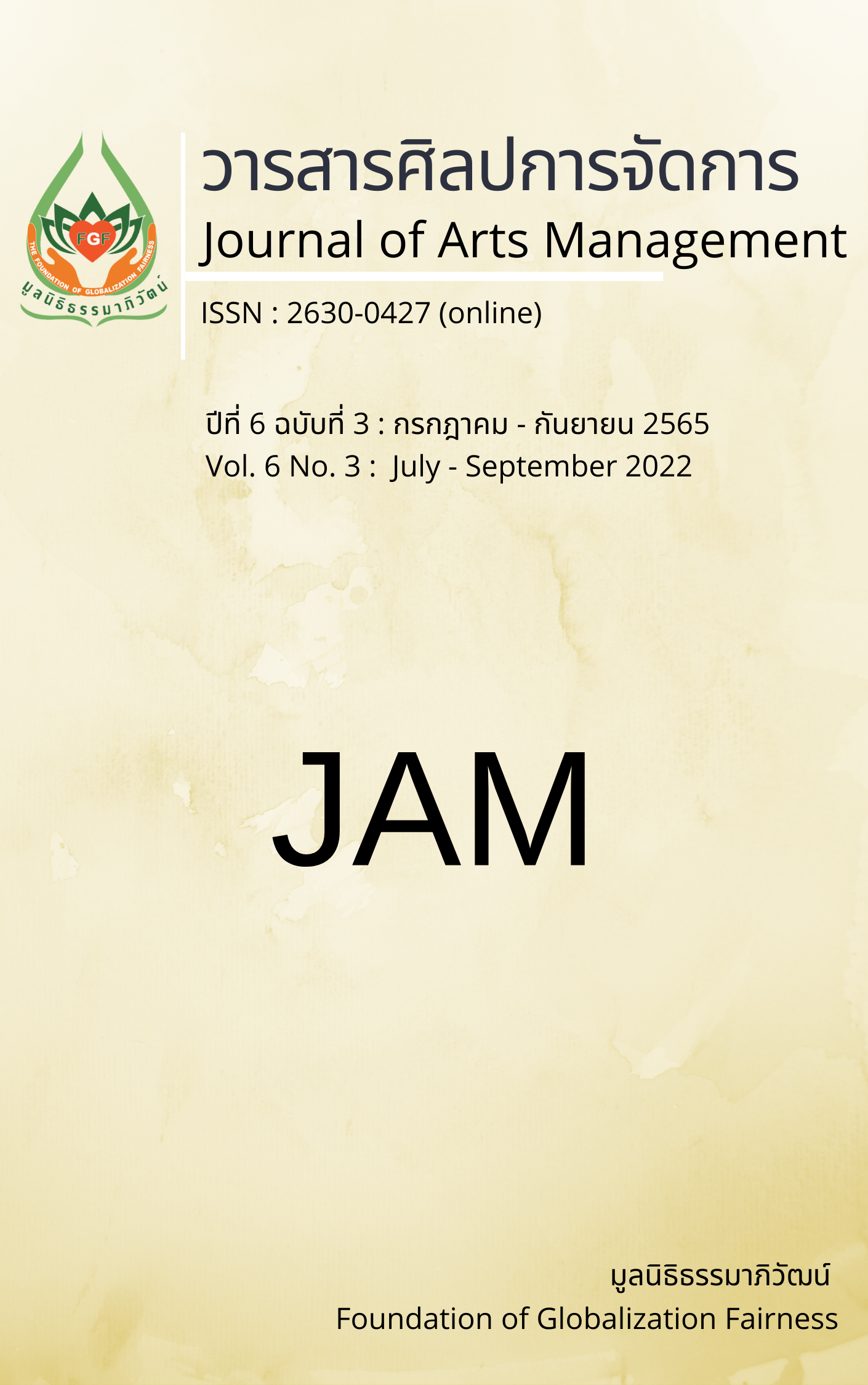The Reflection in the Lan Khamkong Law
Main Article Content
Abstract
The objectives of this article were to study the reflection in the Lan khamkong law. The document with 1 palm leaf, tied with 103 palm leaves. The National Library of Bangkok has preserved its significance as the only document addressing the Lan khamkong Law, the only law of the Phuan ethnic group. In the story of Khun Burom, number 60 in Khun Burom's story, the content is divided into 2 parts, namely, in the first part discussing the legend of Khun Burom. The second part was recorded on the Lan Khamkong Law. Lord Aissara Chettha, or Phra Chao Lan Khamkong (1915-1965), In the reign of Chao Khiew Kham Yo, he established himself in the Tosaphit Rajadhamma. His Highness had the power. He revised the law, called the Law of Lan kham kong. The research results were found as follows:
1. A reflection on the Phuan’s pets.
2. A reflection on the Phuan people's values.
3. Reflection on the way of life of the Phuan people.
4. Reflections on Phuan society Literature reflects the image of society.
5. A reflection on the beliefs of the Phuan people.
6. Reflections on nature and the environment The Lan Khamkong Law.
Article Details

This work is licensed under a Creative Commons Attribution-NonCommercial-NoDerivatives 4.0 International License.
Views and opinions appearing in articles in the Journal of Arts of Management It is the responsibility of the author of the article. and does not constitute the view and responsibility of the editorial team I agree that the article is copyright of the Arts and Management Journal.
References
Aromsuk, T. (1978). Comparison of sounds of words in Phuan and standard Thai. Graduate School Srinakharinwirot University.
Bunkhajorn, T. (1980). Novels and Thai Society 1932 – 1957. Bangkok Printing.
Dansakul, N. (1995). Literature analysis of luk thung by Juliam Kingthong. Graduate School Srinakharinwirot University.
Hall. P.A. (1986). Governing the Economy: The Politics of State Intervention in Britain and France. Oxford University Press.
Homsuwan, S. (2006). Thai Phuan Suphan Buri: Chronicle of the Lan Xang (Khun Burom) Statutes of the Muang Phuan-Xiang Kwang Administration Thai Noi-Thai characters nowadays. Original copy.
Intarakamhaeng, R. (1996). Literary Criticism. Ton Aor Grammy.
Office of the Royal Society. (2011). The Royal Institute's Dictionary. Nanmeebooks.
Nakwatchara, J. (1978). Elementary Theory of Literature. Duangkamon.
Norkham, K. (2012). History of Phuan. Department of Cultural Promotion.
Petcharaj, K. (1985). Analysis of Thai Phuan tales Hat Siew Subdistrict Si Satchanalai District Sukhothai {Master’s Thesis, Srinakharinwirot University Prasarnmit].
Punnotok, T. (1985). Folk beliefs in relation to way of life in Isan society. In folk culture: beliefs and beliefs. Chulalongkorn University.
Udomsilp, P. (1996). Thai Phuan Literature: Relationship with Society. Chulalongkorn University.
Udomsilp, W. (2005). An analytical study Jataka’s Folktale of THAIPHUAN in Ban Muangkhaow Tambon Khokpiep Amphor Srimahosot Changwat Prachinburi[Master’s Thesis, Srinakharinwirot University].
Wellek, R., & Warren, A. (1970). Theory of literature (15th ed.). Harcourt, Brace & World.
Wongthet, P. (1988, August). Jataka tales and the worldview of the Phuan people. Basic Localities: A New Dimension in Folklore. Arts and Culture Magazine, 9(Special edition).


